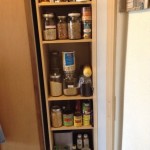Healthy Home-Made Ice-Pops for Kids
/Recently my friends and I were having a nostalgic laugh about the rising trend of home-made ice pops – also known as paletas. The dietitian in me loves that parents are choosing to make tasty snacks for their kids that beat the heat that include real fruits (even veggies) instead of frozen, colored, sugar water. What made my friends and I giggle was remembering how we too had homemade ice pops when we were kids. However, we were raised in the suburbs in the early 80’s. Our ice pops consisted of frozen OJ concentrate, re-constituted with water, and then frozen again in the ice-pop molds. Not exactly gourmet!
Now pint-sized foodies are enjoying paletas (even the new name is fancy) made with on-trend, healthy ingredients like coconut, avocado, Greek yogurt, almond milk, even kale. And, while we were absorbing all sorts of plastic by-products, you can now buy BPA-free plastic molds and stainless steel molds. It’s amazing how far we’ve come!
Interested in making some yourself? A Google or Pinterest browse will supply you with a summer full of healthy frozen kids snack ideas. Here are two ideas to get you started. For the recipes, all the steps are the same:
- Combine ingredients in a blender.
- Blend until smooth.
- Pour into the paleta molds.
- Freeze.
- ENJOY!
Blueberry-Kale Home-Made Ice Pops
You really need to blend this recipe well, otherwise the kale pieces are quite big which I found unpleasant (and I love kale). The kale is never truly hidden in these, but when well-blended, it’s an enjoyable part of their texture.
1 cup frozen blueberries 1 cup kale leaves, stems removed (ideally baby kale leaves) 2 cups coconut water
Raspberry-Almond-Coconut Home-Made Ice Pops
A luscious, dairy-free recipe!
1.5 cups almond milk 1/2 cup coconut milk 1 cup fresh or frozen raspberries 2 teaspoons honey pinch of salt
Combine your favorite fruits with other healthy ingredients for a delicious and refreshing summertime paleta treat!
Get more home-made ice pop recipes here.




 It happened again yesterday. I was leading a workshop and a parent asked me: “Is it wrong to give my child smoothies with veggies in them? Is this considered hiding veggies?” Rarely a workshop goes by without a parent asking me about smoothies for their picky eater kids. They’re such a popular trend these days. While I touched on this in last week’s blog post; it’s such a common question that I get about healthy snacks for kids that I thought that it was worthwhile to expand on it today. And, share some ideas for smoothie ingredients.
It happened again yesterday. I was leading a workshop and a parent asked me: “Is it wrong to give my child smoothies with veggies in them? Is this considered hiding veggies?” Rarely a workshop goes by without a parent asking me about smoothies for their picky eater kids. They’re such a popular trend these days. While I touched on this in last week’s blog post; it’s such a common question that I get about healthy snacks for kids that I thought that it was worthwhile to expand on it today. And, share some ideas for smoothie ingredients. You’ve probably heard that it’s great to get your kids to help you in the kitchen to learn cooking skills, instill healthy eating habits, and more.
You’ve probably heard that it’s great to get your kids to help you in the kitchen to learn cooking skills, instill healthy eating habits, and more. March is Nutrition Month!
March is Nutrition Month!